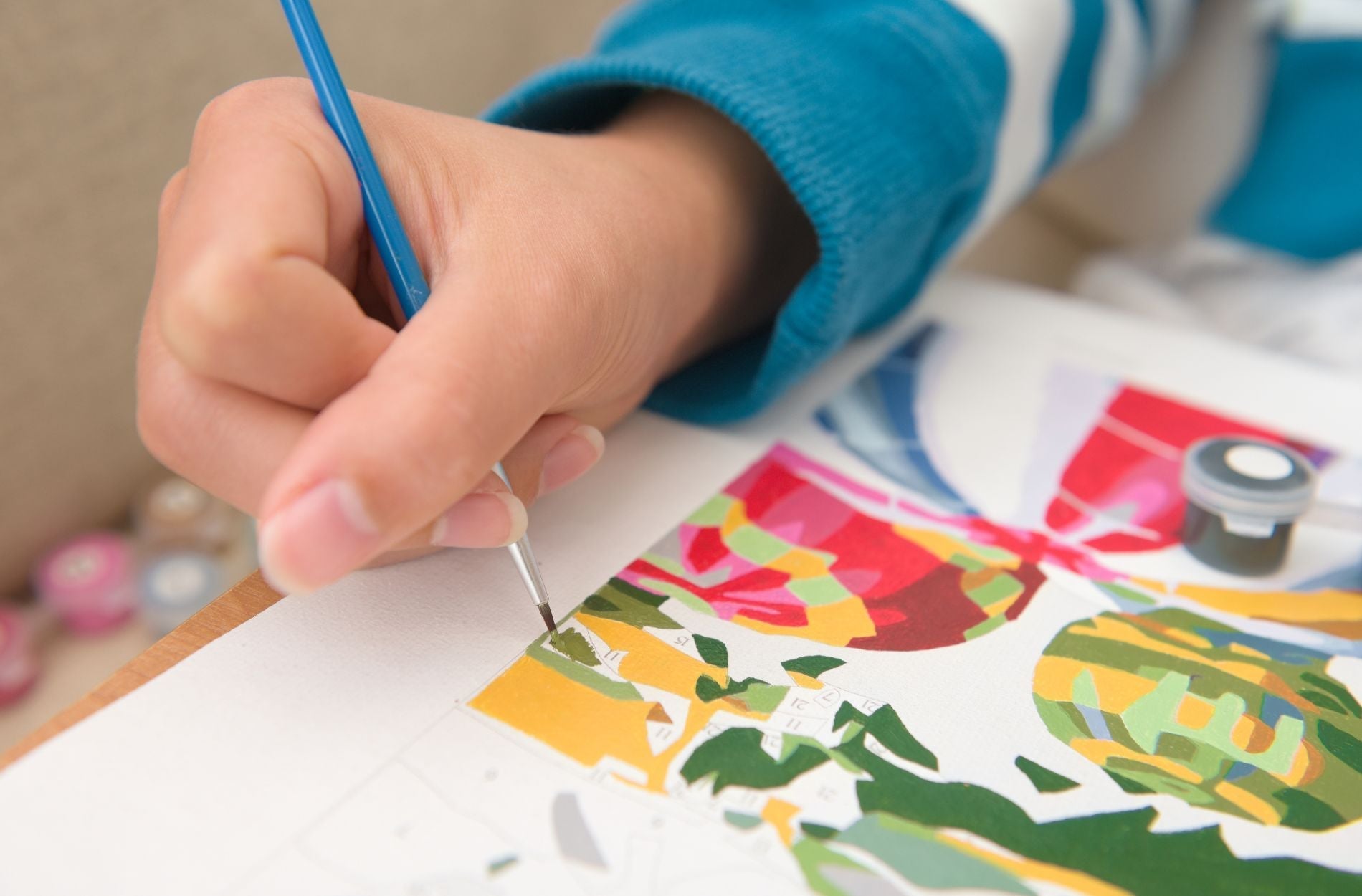Paint-by-numbers kits are a great way to relax and create something beautiful without needing years of art training. Each area marked with numbers serves as a clear roadmap, telling you exactly where to apply each color. But when those numbers start to fade before the painting is done, it can throw everything off. Without the numbers, it becomes harder to know what to paint where, and small mistakes can lead to bigger ones as you go along.
It’s frustrating, especially if you’ve spent hours working carefully. The faint or missing numbers might seem like a minor issue at first, but they can easily take the joy out of the process when you’re having to guess or backtrack. There are a few reasons this happens and a few ways to fix it. Before tossing your kit aside or rushing to replace it, let’s talk about why paint numbers might disappear and what you can do next to keep your painting on track.
Why Paint Numbers Might Fade Unexpectedly
There’s nothing more annoying than setting up your table, getting your brush ready, and realizing the next number is barely visible. Whether you're halfway through or just getting started, it's helpful to understand why this happens so you can avoid repeat frustration in future projects.
Here are the most common causes behind faded numbers:
- Too much exposure to light
If your kit is placed near a bright window or under strong lighting, the ink marking the numbers can lighten over time. Direct sunlight or strong heat from desk lamps can have this effect, especially over several days.
- Excessive handling
Touching the canvas too often can rub off the printed numbers, especially if you apply pressure with your fingers, rest your hands on the canvas, or brush off dust or debris while working.
- Humidity or water exposure
If the kit has been stored in a damp area or exposed to even slight moisture, printed numbers can blur or wash away. This happens more easily with thinner paper or lower-grade inks.
- Low-quality print
Sometimes, the kit itself might be printed using lighter ink that fades faster with time or wear, especially around high-use sections like background areas or large solid-colored zones.
Once you understand the cause, it becomes easier to take action. Whether it’s organizing your workspace away from the sun or knowing what to do when faded areas appear mid-project, small adjustments can make a big difference.
Quick Fixes for Faded Numbers
When you start to notice the numbers getting harder to see, you don’t have to stop painting altogether. There are simple short-term solutions to get around it and keep your progress going.
1. Use a fine-tipped pen or pencil
If the number is still barely visible, lightly trace over it with a fine-point pen or mechanical pencil. Choose one with a light touch so it doesn’t show through the paint. Waterproof pens work well because they won’t run if your brush is still a bit damp later on.
2. Rely on a magnifying glass
Sometimes it’s all about better visibility. A small magnifying glass or desk magnifier can help you spot faint outlines so you can finish without guessing. This works especially well for detail-heavy areas or when your lighting isn’t the best.
3. Compare to the reference sheet
Most kits come with a printed copy of the pattern. Line it up with your canvas to see if you can figure out the missing number based on its shape or placement. It's a good way to double check without making a permanent mark.
4. Use adjusted lighting
If the numbers look faded under regular light, try shining a small flashlight or adjusting your overhead lamp. Sometimes angled lighting shows more of the outline than you’d see under flat room lighting.
These tricks don't take long and can often get you through the section you're working on without much slowdown. They're quick and easy ways to deal with fading before it gets worse, helping you stay focused on enjoying each brushstroke.
Preventive Measures to Keep Paint Numbers Clear
Staying one step ahead can make a big difference in protecting your paint-by-numbers canvas from fading issues. Most of the time, all it takes is a few small habits to help preserve the clarity of your numbers so you can enjoy continuous progress without frustration.
Start by working in a clean, well-lit space. Good overhead lighting or a daylight lamp makes it easier to spot numbered areas before they begin to fade. If you find yourself squinting or leaning too close to the canvas, chances are your lighting needs adjusting. Apart from lighting, make it a habit to store your kit carefully. Keep the canvas flat when it’s not in use and covered with parchment paper to avoid smudging or unintentional rubbing.
One of the easiest safeguards is to take a quick photo of each section before you begin painting. This gives you a clear visual backup in case numbers disappear while you’re working. It’s also helpful for people who like to take their time or paint in short sessions across several days or weeks. You can even store these images in a folder on your phone or tablet for easy reference.
Here are a few more steps to help extend the life of your canvas numbers:
- Avoid resting your arm or hand directly on the canvas while painting. Use a clean paper towel as a barrier if needed.
- Place the canvas away from direct sunlight or heat sources when not in use.
- Don’t stack other objects or materials on top of your canvas during storage.
- Handle the canvas by the edges to keep printed areas untouched when flipping or moving it.
- Let paint layers dry thoroughly before rotating or repositioning the canvas.
These simple habits don’t require fancy tools or extra effort, but they could save your project from fading problems down the road. Once you’ve made them part of your process, they become second nature.
Restoring Faded Sections on a Paint-By-Numbers Canvas
When fading hits a larger area or wipes out numbers completely, short-term fixes might not be enough. In those cases, some thoughtful long-term strategies can help you finish without losing the original intent of the design.
The first step is to look at the reference sheet that comes with your kit. If you’ve already painted part of the faded section, use color patterns around the area to guess what might go next. Then, once you’ve got one or two confirmed matches, you can use those to help rebuild the order or sequence of that space.
If you still have the number key or legend included with your set, you can use it to make a backup. A printed copy or digital scan will give you one more way to restore accuracy, especially if you want to mark the canvas again with a fine-point pen. Don’t forget to mark clearly but lightly so the lines don’t show through the paint.
Another permanent fix is sealing parts of the canvas that are complete and no longer need reference markers. Using a brush-on sealer can help set those portions and reduce the chances of smearing or touching spots where numbers are already gone. It’s best to seal only what you’ve fully painted so the rest of the canvas remains open to adjustments or fresh markings.
This approach gives you more control and allows you to shift your focus toward the artistic side of your project without second-guessing color choices.
Keeping Your Painting Looking Its Best
Getting through the entire kit and placing the final brushstroke is a satisfying moment. If you’ve handled fading numbers during the process, that completion feels even more rewarding. To keep your finished piece looking sharp for years, take a few extra steps to protect it once it’s done.
Let the painting dry for a full day before moving it around. Once dry, seal it completely with a clear, non-yellowing acrylic topcoat. This prevents dust buildup and safeguards against moisture or fading. A spray-on option works well for even coverage, especially on larger canvases.
When it’s time to display your artwork, choose a space inside with stable temperature and lighting. Avoid hanging the canvas near large windows or areas that get direct sunlight throughout the day. Over time, UV rays can wear down the finish and cause colors to fade, even after sealing. A hallway, staircase wall, or cozy reading nook makes a great place where the piece can shine without daylight hitting it directly.
Treat your work like something worth preserving. A bit of extra care during and after the painting process helps your art stand out, and the time you spent working through problems like fading becomes part of the story behind the piece. That personal connection gives your completed painting more meaning, making it more than just a relaxing project, but something memorable too.
Paint-by-numbers projects are a fun way to slow down and enjoy a creative moment. If you're looking to try something new, take a look at our collection of paint-by-numbers kits designed for adults. Ledgebay makes it easy to turn blank canvases into something you're proud to hang on the wall. Get started and see where your next painting takes you.











